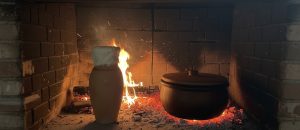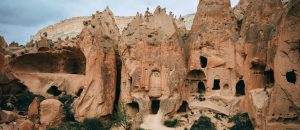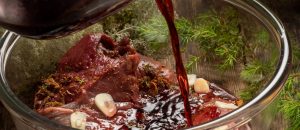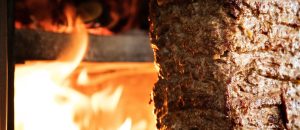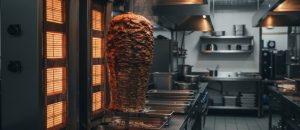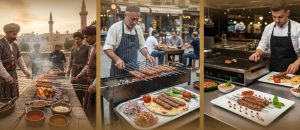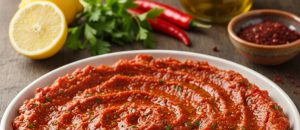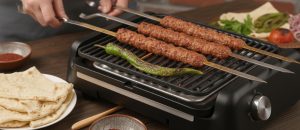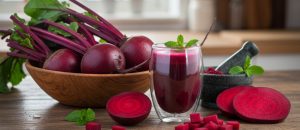The unique flavor of Adana Kebabı stems not only from its ingredients but also from the meticulous method of preparing the meat. This culinary art is embodied by a traditional technique known as “zırh kıyması.” When examined from a culinary science perspective, zırh kıyması plays an unparalleled role by preserving the meat’s fiber structure, optimizing water and fat retention, and ultimately deepening the kebab’s flavor profile. This Cluster Content article meticulously dissects the science behind zırh kıyması, from the molecular structure of the meat to the chemistry of cooking. It will explain why the traditional method surpasses industrial mincing machines, analyze its effects on muscle fibers, and provide scientifically-backed tips for ambitious home chefs to achieve authentic flavor. This in-depth analysis will reveal that Adana Kebabı is not merely a dish, but a cultural heritage where science and art converge.
What is Zırh Kıyması? The Scientific Foundations of a Traditional Preparation Art
Zırh kıyması is the technique of hand-mincing meat with a sharp, large cleaver (“zırh”), forming the basis of many traditional kebab types, especially Adana Kebabı. This method goes far beyond the electric mincing machines used in modern kitchens; it represents a fusion of craftsmanship, patience, and deep knowledge of meat. Traditionally, the meat is minced with rhythmic movements on a large wooden block, preserving the integrity of muscle fibers and maintaining the meat’s distinctive texture and flavor without breaking the cold chain. During this process, the meat and lamb tail fat form a homogeneous yet granular structure, which is crucial for the kebab to retain its juices during cooking and achieve a chewable, succulent consistency. Zırh kıyması is not merely the mechanical reduction of meat, but a preparatory art that maximizes the meat’s character and gastronomic potential. This technique embodies the fundamental scientific principles that give Adana Kebabı its characteristic “bite resistance” and melt-in-the-mouth flavor.
Defining “Zırh” and Its Purpose: A Sharp Tradition
The term “zırh” refers to the traditional, double-edged, wide, and heavy cleaver used to mince kebab meat. The name of this tool also defines the meat mincing technique itself. The primary purpose of the zırh is to mince the meat into fine pieces with sharp blows, rather than crushing the muscle fibers. While industrial mincers can exert pressure that crushes fibers and may lead to moisture loss, the zırh “cuts” the fibers. This cutting process preserves the integrity of the meat’s cellular structure and proteins much better. The resulting mince has a granular, textured consistency with evenly distributed fat particles. This structure allows the meat to retain its moisture during cooking, provides an ideal surface area for caramelization (Maillard reaction), and enables the kebab to develop its characteristic texture. The zırh is not just a tool; it is a symbol of craftsmanship and quality in kebab-making, a part of a traditional heritage.
Meat Anatomy and Muscle Fiber Preservation in Zırh Kıyması
One of the most crucial factors determining the flavor and texture of meat is the structure of its muscle fibers. Zırh kıyması preserves this fiber structure to the maximum extent, directly influencing the final quality of the kebab. In this section, we will focus on the basic anatomy of muscle fibers and examine, at a molecular level, how the zırh technique preserves them. Proper meat processing plays a decisive role not only in flavor but also in chewability and juiciness. The scientific superiority of zırh kıyması largely stems from its ability to preserve these fibers.
Muscle Fiber Structure and the Impact of Mincing
The meat of mammals is primarily composed of muscle fibers. These muscle fibers consist of myofibrils, which are made up of protein filaments called actin and myosin. The fibers are organized into bundles surrounded by connective tissue (collagen and elastin). The chewability and texture of the meat depend on the thickness and length of these muscle fibers, as well as the amount and structure of the connective tissue. Traditional mincing machines or blenders, by processing meat at high speed and pressure, can fragment, crush, and tear muscle fibers and connective tissue. This reduces the meat’s water-holding capacity, accelerates protein denaturation, and can make the meat more pasty and difficult to chew. Furthermore, the disruption of the fiber structure leads to moisture loss during cooking, resulting in a dry consistency. This scientific reality highlights the decisive role of the correct mincing technique on the quality of meat products.
Why Does the Zırh Technique Preserve Fiber Structure? A Molecular Perspective
The superiority of the zırh technique lies in its principle of “cutting” rather than “grinding” the meat. The large, sharp zırh cleanly slices through muscle fibers with a single blow. This controlled cut preserves the integrity and length of muscle fibers much better than machine mincing. From a molecular perspective:
- Minimal Cellular Damage: The zırh causes less damage to the cell walls of meat cells. When cell walls are damaged, intracellular fluids (water and proteins) tend to leak out. The zırh minimizes this leakage, helping the meat retain its natural juices.
- Protein Integrity: Proteins like actin and myosin in muscle fibers experience less mechanical stress when minced with a zırh. While the friction and heat generated by a mincing machine can lead to early denaturation of these proteins, the zırh technique reduces this risk. The preservation of protein’s natural structure allows them to bind water molecules more effectively during cooking.
- Fat Distribution: The zırh cuts the lamb tail fat with the same precision and mixes it homogeneously with the meat. This ensures that the fat melts evenly during cooking, infuses into the meat, and prevents it from drying out. Industrial mincing can crush the fat, preventing it from fully integrating with the meat.
- Texture and Chewability: The preservation of the fiber structure gives the cooked kebab its characteristic “bite resistance” and yet easy chewability. The fact that fibers are still discernible when the meat is broken down in the mouth is a fundamental part of the authentic Adana Kebabı experience, made possible by the zırh technique.
These molecular interactions demonstrate that zırh kıyması is not merely a traditional method, but also one of the most scientifically optimal techniques in kebab preparation.
Water and Fat Retention Mechanisms: The Secret to a Juicy and Flavorful Kebab
The melt-in-your-mouth, succulent, and rich flavor of Adana Kebabı is not merely the result of proper meat selection, but also a consequence of the scientific effects of the mincing process on the meat’s water and fat retention capacity. The zırh kıyması technique is designed to maximize the preservation of the meat’s natural moisture and the richness of the added lamb tail fat. This prevents the meat from drying out during cooking, ensures the kebab’s characteristic juicy texture, and allows flavor molecules to be distributed more effectively. The thermal changes during the kebab’s cooking process and the meat’s hydration status have a decisive impact on the final flavor and texture.
Moisture Retention Capacity of Zırh Mince Meat
The high moisture retention capacity of meat prepared with zırh kıyması is fundamentally based on the preservation of muscle fiber integrity. As discussed earlier, the zırh cleaver cuts the meat without crushing it, cleanly severing the muscle fibers. This ensures minimal damage to cell membranes and protein structures.
- Cellular Integrity: Water molecules within meat cells are tightly bound by proteins. The zırh technique preserves the structure of these cells and their surrounding membranes, largely preventing intracellular water from leaking out during cooking. The crushing effect of a mincing machine, however, breaks down cell walls, accelerating water loss.
- Protein Hydration: Proteins like actin and myosin, which make up muscle fibers, have the ability to bind water molecules. Zırh kıyması reduces the denaturation (structural degradation) of these proteins, allowing them to bind water molecules more effectively during cooking. This helps maintain the succulence of the meat in both its raw and cooked states.
- Capillary Effect: The granular and slightly textured structure of zırh kıyması creates micro-voids between the meat particles. These voids act as “reservoirs” for the melted lamb tail fat and meat juices during cooking. This capillary effect contributes to the even distribution of moisture within the meat and prevents its escape, resulting in a juicier and more homogeneous kebab texture.
The Scientific Contribution of Lamb Tail Fat to Flavor and Texture
The role of lamb tail fat in the rich flavor profile and characteristic texture of Adana Kebabı is also scientifically significant. Lamb tail fat is not just a flavoring agent but also a texture and moisture agent.
- Fatty Acid Profile: Lamb tail fat contains specific fatty acids that support the unique flavor of lamb meat. These fatty acids break down during cooking, adding complex aroma compounds to the kebab. Fats reacting with heat support chemical processes like the Maillard reaction, enhancing flavor depth.
- Moisture and Juiciness: Melted lamb tail fat permeates between the meat fibers during cooking, preventing dry spots. This increases the overall moisture content of the meat and ensures the kebab remains succulent. Fat also contributes to the “melt-in-your-mouth” sensation, improving the meat’s tenderness.
- Thermal Conductivity: Fat helps to transfer heat more homogeneously into the meat. This contributes to even cooking both internally and externally, preventing the surface from drying out excessively.
- Texture and Mouthfeel: Lamb tail fat acts as a binder, helping the mince adhere to the skewer, while also imparting a smooth yet slightly granular mouthfeel to the cooked kebab. The microscopic voids created by the melting fat increase the kebab’s chewability and make it more palatable.
Traditional Zırh Mince vs. Industrial Mincing Machine: A Scientific Comparison
While modern kitchen technologies accelerate meat processing, there are significant scientific and sensory differences between traditional zırh mince and meat processed by industrial mincing machines. This comparison clarifies why preparing Adana Kebabı with the traditional method is essential, emphasizing the importance of culinary science principles in practical application. The mechanical stress, heat, and changes in fiber structure that meat undergoes directly affect the quality of the final product.
Negative Effects of Mincing Machines on Meat Fibers
Industrial mincing machines operate on the principle of grinding meat through a series of blades and plates. This fast and pressurized process can lead to several negative effects on meat fibers:
- Disruption and Crushing of Fiber Structure: Mincing machines tend to crush and tear the meat rather than cleanly cut it. This causes irregular tearing and breaking of muscle fibers and connective tissues. This disruption of the fiber structure reduces the meat’s natural water-holding capacity and leads to greater moisture loss during cooking.
- Protein Denaturation: High-speed rotating blades create friction and heat in the meat. This mechanical energy and heat can cause early denaturation of meat proteins (actin, myosin, collagen). Denatured proteins bind water molecules less effectively and can contribute to the toughening of the meat.
- Fat Distribution and Emulsion Breakdown: Mincing machines can also crush the fat within the meat and distribute it unevenly, leading to an emulsion breakdown. Irregular fat distribution can cause some parts of the meat to dry out during cooking, while others become excessively greasy.
- Texture and Mouthfeel: Kebabs prepared with machine-minced meat are often pastier and more difficult to chew. Due to the disruption of the fiber structure, the characteristic “bite resistance” and rich mouthfeel of the meat are lost.
The Superiority of the Traditional Method: Flavor and Texture Differences
The zırh kıyması technique, in contrast to industrial mincing machines, yields a superior product by preserving the meat’s natural structure and properties to the highest degree. This superiority is based on scientific principles:
- Preserved Fiber Structure: The zırh cuts the meat without crushing it, thereby preserving the integrity of muscle fibers. This ensures that the meat retains its juices and flavor during cooking, resulting in the kebab’s succulent, firm, and uniquely chewable texture.
- Optimal Water Retention: The preserved fiber structure and minimal cellular damage enhance the meat’s ability to retain its natural moisture. This guarantees that the meat remains juicy internally without drying out during cooking.
- Homogeneous Fat Distribution: The zırh minces the meat and lamb tail fat into even and regular particles, creating a homogeneous mixture. This ensures that the fat melts evenly during cooking, permeates throughout the meat, and deepens the flavor.
- Enhanced Maillard Reaction: The granular and slightly irregular surface area of zırh kıyması provides a larger contact surface for the Maillard reaction (the chemical reaction responsible for caramelization and flavor development) during cooking. This reaction produces a golden-brown crust and rich, complex flavors on the exterior of the kebab.
- Superior Texture and Mouthfeel: Zırh kıyması ensures the kebab’s melt-in-your-mouth, juicy texture, which simultaneously possesses a distinct fibrous structure and high “bite resistance.” This is one of the distinguishing characteristics of Adana Kebabı and offers a complete sensory experience.
This scientific comparison clearly demonstrates that traditional zırh kıyması is not merely a habit, but a scientifically founded, superior method that maximizes the gastronomic potential of meat.
Home Chef’s Scientific Tips: Achieving Results Close to Zırh Kıyması
To achieve an authentic Adana Kebabı flavor at home, understanding the scientific principles behind the traditional zırh technique is key. Even without professional equipment, you can utilize scientifically-backed approaches and practical tips to produce results that closely mimic zırh kıyması, making your kebabs juicier, more flavorful, and more authentic. This section provides ambitious home chefs with scientifically-informed practical advice, from meat selection to alternative mincing methods.
Meat Selection and Preparation: A Scientific Approach
- Right Meat, Right Fat Ratio: Opting for young lamb meat (from the shoulder, ribs, and back) means finer muscle fibers and less connective tissue, which translates to easier mincing and a more tender kebab. Ensure the meat has a natural fat content of about 20-30% or adjust it with added lamb tail fat. Fat is crucial not only for flavor but also for keeping the meat juicy and adhering to the skewer.
- Cold Working Principle: Scientifically, keeping the meat and lamb tail fat cold is vital for mincing efficiency and muscle fiber preservation. Cold meat has a firmer structure, which means it gets crushed less and loses less water when cut or minced. Ensure the meat’s temperature doesn’t rise during mincing. If necessary, chill it in the freezer for short intervals.
- Connective Tissue Management: Trimming away thick connective tissues and sinews from the meat will enhance the kebab’s chewability. Excess connective tissue can lead to toughening and an undesirable texture during cooking.
Alternative Mincing Methods and What to Watch Out For
Even if you don’t own a zırh cleaver, you can achieve a texture very close to zırh kıyması using the following methods:
- Hand-Mincing with a Sharp Knife (Closest Alternative):
- Light Freezing: Place the meat and lamb tail fat in the freezer for 20-30 minutes until firm but not frozen solid. This makes cutting easier.
- Thin Slicing: Slice the meat into thin strips, perpendicular to the muscle fibers.
- Fine Chopping: Stack the sliced meat and cut it into even thinner strips. Then, gather all the strips and, using two sharp knives (or one with patience), finely chop the meat with rhythmic, swift movements until it’s about the size of rice grains. Focus on cutting, not crushing, the meat. This method best preserves the fiber structure among home alternatives.
- Using a Meat Grinder (Single Pass, Coarse Die):
- Single Pass Only: Pass the meat and lamb tail fat through the meat grinder’s coarsest die only once. Grinding it twice will excessively crush the meat, resulting in a pasty texture.
- Cold Meat & Equipment: Ensure the meat and grinder parts are very cold before grinding. Chilling the grinder’s blade and die in the freezer will be beneficial.
- Kneading and Resting: Regardless of the mincing method, avoid over-kneading the meat after adding spices. Gently knead just enough to achieve a homogeneous mixture. Excessive kneading can compact the meat’s proteins, leading to a tougher texture. Resting the prepared mince in the refrigerator for at least 2-3 hours allows the spices to infuse and flavors to meld, while also helping the meat adhere better to the skewer.
These scientific tips empower home chefs to take more informed steps in preparing Adana Kebabı and achieve results closer to the traditional flavor.
The Intersection of a Traditional Technique with Modern Science
Zırh kıyması, far from being merely a traditional meat processing art passed down through centuries, is a method deeply rooted in scientific principles that align perfectly with modern culinary science. As we have explored throughout this Cluster Content article, the zırh technique scientifically proves its superiority over industrial mincing machines by preserving the meat’s muscle fiber structure, optimizing water and fat retention, providing an ideal surface area for the Maillard reaction, and ultimately imparting a unique flavor, juiciness, and texture to Adana Kebabı. This traditional method, from the molecular structure of the meat to the chemistry of cooking, maximizes the gastronomic potential of the kebab at every stage. Zırh kıyması is not just a preparation method; it is a vivid example of the deep, culturally rich heritage of Turkish cuisine, intertwined with scientific understanding.







